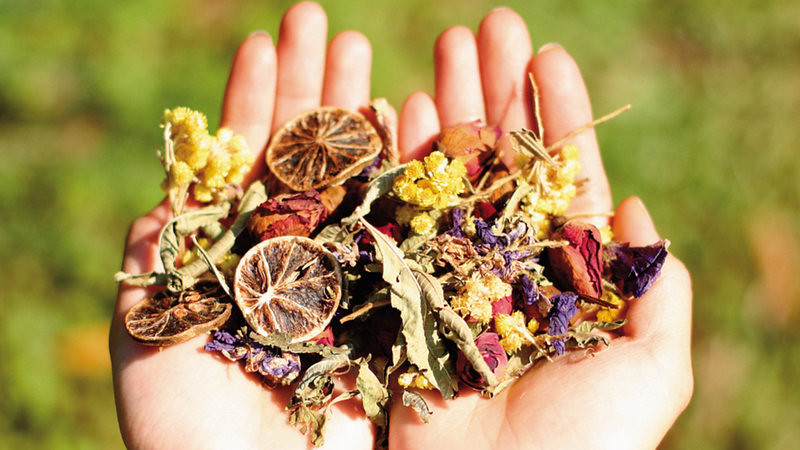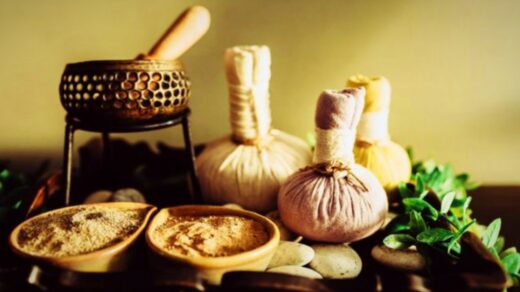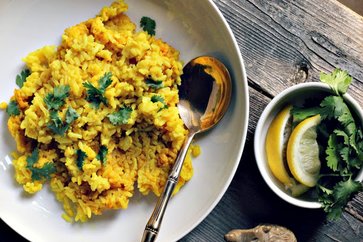5 Ayurvedic Remedies & Diet to Get Rid of Diabetes Permanently
Diabetes mellitus has become a global problem, despite advances in modern science in today’s world. The word “Diabetes Mellitus” has derived from two words diabetes (in Greek) means ‘siphon through’ and Mellitus (in Latin) means ‘sweetened with honey.
It is a metabolic disorder that is caused by the malfunction of the pancreas, which is responsible for producing the hormone insulin. In medical terms, it is a condition in which there is an accumulation of glucose in the urine and blood of the person. This condition is known as hyperglycemia.
According to “The WHO” report India has been projected as the fastest-growing country with diabetic patients. It has been estimated that diabetic patients in India will increase by 195% between 1995 to 2025.
What is Diabetes Mellitus?
Diabetes mellitus is a group of metabolic disorders that are characterized by high blood sugar (glucose) in the body, resulting in defects in the insulin secretion process or action. In ancient times world Diabetes mellitus was generally known as “excessive muscle loss”.
Later on, it was recognized as a disease related to “sweet urine” and in today’s world, it is known as “diabetes”. Excess levels of (hyperglycemia) blood glucose in the body lead to the spillage of glucose through the urine, so it is also term as sweet urine.
Generally, the levels of blood glucose are processed or controlled by insulin. It is a hormone that is produced by the pancreas. Insulin works to control and lower the level of blood glucose.
When we eat food the level of blood glucose elevates and insulin is released from the pancreas to normalize the glucose level. In certain people there is an absence or insufficient production of insulin which causes hyperglycemia, such person is known as diabetic patients.
Although diabetes is a chronic disease that lasts a lifetime it can well be controlled with various medications, diet, and a healthy lifestyle.
Ayurvedic View Diabetes Mellitus?
An ailment Diabetes mellitus is not new for the Indians, it has been known to Indians since the Vedic period by the name of “Asrava” (Prameha). There is various Ayurvedic medicine for diabetes in Ayurveda, the reference is very well described in the “Kauchika Soothra” of Atharva Veda.
In this Vedic period, people were treating this problem successfully with certain diets, herbs, and mediation. It is also recognized as “Madhumeha” or Maharoga (major disease) in Ayurveda. The ailment “Madhumeha” was described as a disease in which a patient passes sweet urine and sweetness exhibitions throughout the body, (ie in sweat, blood, mucus, breathing, etc).
Diabetes mellitus (DM) is defined as “Madhumeha kshaudrameha” in Ayurveda which literally means “excessive of urine with a sweet taste like honey” The other term given was “vikriti Janya dhatupak”.
This means a disease that is caused by a defective metabolism leading to derangement in body tissue ( the seven dhatus) transformation process. According to Ayurveda texts, there are about 20 types of urinary disorders (pramehas) that are classified based on the predominant doshas.
Types Of Urinary Disorders Related To Doshas
The realm of Ayurveda classifies urinary disorders, or “pramehas,” based on the interplay of doshas, the fundamental energies that govern the body. These classifications provide valuable insights into the varied manifestations of urinary issues:
Kaphaja Pramehas – 10 Types
Kapha, the dosha associated with earth and water elements, is at the root of ten distinct types of urinary disorders. These disorders manifest due to an imbalance in Kapha, resulting in diverse symptoms and imprints on the body’s equilibrium. Ayurveda acknowledges these variations and tailors interventions to address the specific characteristics of each disorder.
Pittaja Pramehas – 6 Types
Pitta, characterized by fire and water elements, contributes to six different urinary disorders. When Pitta becomes imbalanced, it gives rise to an array of issues that affect the urinary system. The unique qualities of each Pittaja prameha guide the Ayurvedic approach, ensuring targeted remedies and personalized care.
Vataja Pramehas – 4 Types
Vata, the dosha associated with air and space elements, plays a role in four distinct urinary disorders. An imbalance in Vata disrupts the harmonious functioning of the urinary system, leading to specific patterns of symptoms. Ayurveda’s wisdom addresses these variations through comprehensive solutions that encompass diet, lifestyle, and herbal remedies.
The classification of urinary disorders according to doshas underscores the intricacies of Ayurvedic diagnosis and treatment. By identifying the doshic imbalances at play, Ayurveda provides a roadmap for restoring harmony within the body. This tailored approach ensures that interventions address the root causes of urinary issues, promoting holistic well-being and equilibrium.
Physical Characteristics Of Urine
Urine, a remarkable window into our body’s inner workings, reveals its state through various physical characteristics. Delving into these attributes offers insights into our health and well-being:
1. Volume: The amount of urine excreted reflects our hydration levels and overall kidney function. Adequate hydration typically yields a pale, ample flow, while dehydration can lead to darker, more concentrated urine.
2. Color: The hue of urine offers valuable clues about our internal balance. From light straw to deeper amber, color variations indicate hydration status and potential health concerns.
3. Odor: The scent of urine can vary, influenced by factors like diet, hydration, and underlying medical conditions. While a mild odor is normal, unusual or strong smells might warrant attention.
4. Flavor: Although not commonly evaluated, urine’s taste can offer insights into our health. Sweetness, for instance, might indicate high blood sugar levels.
5. Sediments: The presence of sediments—tiny particles or materials—can indicate imbalances or infections. Cloudiness or particles might signify issues that require medical attention.
6. Solid Particles: Solid particles in urine can encompass crystals, cells, or debris. Their presence could be indicative of kidney stones, infections, or other underlying problems.
7. Seminal Fluid: In men, traces of seminal fluid might occasionally appear in urine. This can occur after sexual activity and is generally harmless.
8. Mucus: Detectable mucus could be a sign of irritation or infection within the urinary tract.
Understanding these physical traits empowers us to engage with our bodies in a more informed manner.
Regular observation of urine’s characteristics allows us to gauge our health, identify potential issues, and make timely adjustments to promote our overall well-being.
The urine is discharged in excessive amounts and is generally cloudy are some of the Characteristics.
What Is The Cause Of Diabetes Mellitus?
Diabetes Mellitus is an ailment that can occur in any of the three constitutions (Vata, Kapha, and pitta) of the body. The Ayurvedic medicine for diabetes includes lifestyle interventions diet, exercise, and a variety of herbs and herbal remedies depending on the predominant dosha.
It is not astonishing that today’s Western medicine descriptions for Diabetes Mellitus are basically similarly mentioned in Ayurveda such as etiology, diagnosis, prognosis, and recommended lifestyle changes life.
Moreover, Ayurvedic treatment for diabetes also includes cleansing procedures and it is unique of its own. Diabetes Mellitus is a disease that affects most parts of the body and every cell of human physiology.
The ancient Indian doctors (known as vaidya) not only described the sweetness of urine as one of the main symptoms, but they also mentioned the relationship of the disease with disruption of the 5 sheaths of the body such as:-
- Annamaya kosha (Food Sheath)
- Pranamaya kosha (Energy Sheath)
- Manomaya kosha (Mind Sheath)
- Vijnana Maya kosha (Intellectual Sheath)
- Anandamaya kosha (Bliss Sheath)
What Are The Symptoms Of Diabetes Mellitus?
Prodromal Symptoms of prameha have been explained in detail by ayurvedic experts (acharyas) especially in Brihathrayies they are as follows.
- Sweda (Profuced sweating)
- Anga shidhilathwam (Looseness the body)
- Angagandham (Foul smell of the body)
- Sayyasna swapnasukhabhishangithwam (Feeling of lethargy)
- Hridayopadeham (Feeling of something coated or heaviness of Hridaya)
- Netropadeham (Feeling of something coated on eyes)
- Jhwopadeham (sensation of a coated tongue)
- Shravanopadeham (Feeling of coating on ears)
- Keshathivridhi (Excessive growth of hairs)
- Nakhathivridhi (Excessive growth of Nails)
- Sheetha priyathwam (Affinity towards cold)
- Gala shosham (Dryness of throat)
- Anga ghanathwam (Heaviness of body parts)
- Asya madhuryam (Sweet taste in mouth)
- Thalu shosham (Dryness of palate)
- Karadaham (Burning sensation of palms)
- Pada daham (Burning sensation of soles)
- Moothra madhuryam (Sweetness of urine)
What Is The Diet Recommended For Diabetes?
Ayurvedic medicine for diabetes also depends on the particular diet and there are many food items that can be given to diabetes patients. The role of ahara and vihara is most important to control blood sugar levels in diabetes patients, and to prevent complications of the disease. Below are some of the classic Aharah (foods) Dravyas (juice) that are recommended.
Cereals:
- Yava (barley) is the best, different food preparations, prepared from barley can be given, for example, Mantha, Odana, Appopa, bread, etc.
- Roti prepared from barley, wheat (Godooma) can also be given.
- Ayurveda prescribed old rice (Purana Shali) as one of the cereals, which can be prescribed to diabetic patients.
Pluses:
- Mudga (Vignaradiata Greengram)
- Kulattha (Dolichos biflorus)
- Adhaki (Cajanus cajan – Pigeon pea)
- Chanaka (Cicer arietinum Linn. – Bengal gram)
Vegetables:
- Karela (Momordica charantia – Bitter gourd)
- Methi (Trigonella foenum–graecum – Fenugreek)
- Rasona (Allium sativum – Garlic)
- Patola (Vietnamese luffa, Vietnamese gourd, or Chinese okra)
- Udumbara (Ficus racemosa – Cluster Fig Tree, Indian Fig Treeor Goolar (Gular)
Fruits:
- Jambu (Syzygium cuini – Blackberry)
- Amalaki (Phyllanthus Emblica – Nepalese/Indian gooseberry, or Dhatrik (in Maithili) or amla)
- Kapitta (Limonia acidissima – Elephant Apple, Wood Apple, [‘Monkey Fruit or Curd Fruit )
- Tala phala (Borassus flabellifer – the Asian Palmyra palm, Toddy palm, Sugar palm, or Cambodian palm)
- Kharjura (Phoenix sylvestris –Date Sugar Palm )
Seeds:
- Kamala (Nelumbo nucifera Indian lotus, sacred lotus, bean of India, or simply lotus)
- Utpala (Nymphoea Stellata)
Flesh:
- Harina mamsa (Deer flesh)
- Shashaka mamsa (Rabbit)
- Kapotha, Titira (birds )
Liquor:
- Old sura (old wine)
Oils:
- Sarshapa taila (Mustard oil)
- Ingudi (Balanitis aegypotiaca) Ghritha
List Of Herbs For Diabetes Mellitus
1. Bitter Melon
It belongs to the family Cucurbitaceae and is obtained from the edible fruit of Momordica charantia.
Uses: Bitter melon is a well-known herb used for antidiabetic. The lectin properties in Bitter melon perform as insulin-like activity, due to its non-specific protein that binds to insulin receptors together. This lectin reduces the blood glucose level by acting on peripheral tissues. Lectin is an important contributor to the hypoglycemic effect.
How To Use It: It can be used as fresh juice, tincture, powdered leaf, and extract juice.
Dose:
- Fresh juice 57-113 g per day
- Tincture- 1.3 ml / twice / day,
- Extract juice 300-600 mg
- Powered leaf- 1-2g.
2. Turmeric
It belongs to the family of Zingiberaceae and is obtained from the Curcuma longa plant.
Uses: It is believed that Turmeric has antioxidant properties that can help to fight inflammation and various infection. Research also suggested that consuming turmeric could help to treat diabetes by preventing and lowering the level of diabetes. It is due to its active component called “curcumin” which is responsible for many intended benefits of this spice.
A review released in 2013 on studies of Turmeric stated that it may lower blood glucose levels as well as other diabetes-related complications. They also found that “curcumin” contain in turmeric play a role in preventing diabetes. But more trials are needed for a better understanding of the effects of curcumin and turmeric on humans.
Many experts do believe that turmeric extract may be helpful to stabilize blood sugar levels and making diabetes more manageable. This extract can be the best counter supplement for diabetes.
How to use it: Turmeric powder is used.
Dose:
- Powdered turmeric 500-8000 mg / day.
3. Amla
It belongs to the family Euphorbiaceae and is obtained from dried and fresh fruits of Emblica Officinalis.
Use: Amla is the fruit which is a well-known scene in ancient times, in the science of Ayurveda; doctors often prescribe Amla for various health benefits it is also known as Amalaki and scientifically “Phyllanthus Emblica”. It is a rejuvenating fruit that is full of vitamins B and C and various other outstanding phytonutrients. These properties help to lower blood glucose levels in diabetics along with reducing cholesterol.
A study published in the International Journal of Food Science and Nutrition had reviewed that consuming fruit amla can reduce cholesterol as well as levels of blood sugar. The study was performed on both normal and diabetic volunteers in which they were given 2 to 3 g of amla powder. Significantly they found an improvement of high-density lipoprotein cholesterol and lowered low-density lipoprotein cholesterol levels.
They also found that there was a reduction in high blood sugar levels in diabetic patients. In which diabetic individuals when given 1to 3 gm of amla powder on daily basis had decreased levels of fasting and 2-hour postprandial blood glucose levels after 20 days. Besides this, an individual who was given 3gm of amla powder had shown significantly reduced sugar levels.
How to use it: It is used as Amalaki capsules.
Dosage:
- Amla fruit powder can also be taken twice a day.
- Amla juice (Emblica Officinalis) (20 ml) twice a day is good for diabetic patients.
- 1 capsule / twice a day before meals.
4. Fenugreek
It belongs to the family Fabaceae and it is obtained from the leaves and seeds of Trigonella foenum- graecum.
Uses: Fenugreek is another herb that is used for antidiabetic. Fenugreek seeds can lower blood sugar levels in people with type II diabetes due to their fiber-rich fraction properties. Including fenugreek in your daily diet can lower your blood sugar, keeping diabetes under control. It is believed that if you consume fenugreek 5-10 gm a day it can easily reduce blood sugar levels.
It is because of fenugreek seeds which contain soluble fibers, which can slow down the process of digestion by increasing sugar absorption and reducing the blood sugar level.
Consuming fenugreek seeds can also boost antioxidants in the body, reduces the oxidation of lipids that are harmful to the body. So if you want a natural way to keep diabetes under control, have fenugreek seeds a day in any form you like.
Experts believe that a bitter taste is due to its alkaloids and other compounds that can aid in the stimulation of insulin secretion. A study was performed on mice in which it was found that the 4-hydroxy isoleucine protein present in fenugreek can stimulate the secretion of insulin in the pancreas which can help to reduce the absorption of glucose.
How to use it: The seeds and leaves of fenugreek are used for therapeutic purposes.
Dose:
- Leaves- 5-30 gm/ thrice daily with a meal
- Seeds- 10gm/ daily.
5. Bael
It is also known as Aegle marmelos, it is gray or green color until the fruit is fully ripe, it belongs to the family Rutaceae plant.
Use: Aegle marmelos is not known as a diabetic remedy in the western world, but it has been popularly used in Ayurvedic medicine for thousands of years in India. I have been proved as one of the best remedies for diabetes. It is believed to be best as anti-diabetic action, due to its powerful antioxidant properties.
One of the main reasons for diabetes is due to oxidative stress which causes (free radical damage). Although the exact mechanism of action is not known but is believed that free radicals produce protein glutathione, inactivation of enzymes, alterations in the structural functions of the collagen basement membrane which are responsible for the onset of diabetes. It is also believed that oxidative stress has a significant effect on glucose transportation of protein (GLUT) or insulin receptors.
Research has shown that reduction in oxytocic stress can result in a reduction of serum glucose. The plant Aegle marmelos has the responsible compounds of properties found in leaves and pulp that can help to reduce oxidative stress.
The plant leaves contain properties such as
- Alkaloids,
- Cardiac glycosides,
- Terpenoids,
- Saponins,
- Tannins,
- Flavonoids
The plant pulp contains properties such as
- Steroids,
- Terpenoids,
- Flavonoids,
- Phenolic compounds,
- Lignin,
- Inulin,
- Proteins,
- Carbohydrates,
- Alkaloids,
- Cardiac glycosides
How to use it: Aqueous decoction (containing water) is used as aqueous extract and leaf.
Dose:
- Aqueous decoction- 1 ml / 100 mg.
- Aqueous leaf extracts 1 g / kg.
Precautions And Tips: Diabetes is a disease of disordered metabolism; so special attention must be taken to maintain the condition of digestion and metabolism.
Ayurveda suggest that one should start with light diet (bhaksha laghu, laghu ahara) and then gradually increase the amount of food. It is a rule to keep the full attention of the condition of Agni (digestion).


























Currently, the medical establishment advises using some form of the glycemic index to keep blood sugar low and to get more exercise but the problem is that it is a coping mechanism not addressing the root of diabetes.
Diabetes has hidden dangers that begin before diagnosis and continue to worsen if certain steps are not taken to prevent the complications that are the true, “killers” in terms of diabetes.
My doctor tested me for diabetes and found that I had type II diabetes and the sugar was attacking my legs because it had no place to go. He put me on a sugar free diet and Actos and within one to two days my symptom were gone.. One day I got extremely sick, could not keep anything down, had blurry vision, a rapid heartbeat.
The dose of fenugreek doesn’t seem right. It says 100gm/day- that is a huge amount of fenugreek! Is it supposed to be 10gm/day?
madam, Manjusha Ladha
Thanks for pointing out typo.
In today’s world, many people are realizing that they need to get educated about the reality of disease. In addition to gaining basic knowledge about conditions they may be susceptible to, individuals need to develop prevention strategies that can empower them to lead profoundly healthy lives.
Steady use of turmeric is also linked with liver failure – observed by hepatologists.
Very useful information. Thanks a lot. Thanks once again.